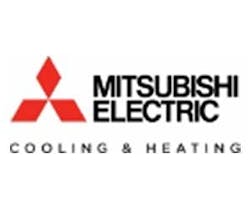Best of Both Worlds: Water-source VRF Zoning Systems Combine Benefits of Geothermal and Variable Refrigerant Flow Zoning Technology
Variable Refrigerant Flow (VRF) zoning systems and geothermal systems (or water-source) are two of the most energy-efficient options for cooling and heating available in the U.S. today. Technology exists that combines the benefits of both systems. This article provides an overview of that technology and its advantages compared to traditional geothermal systems and air-source VRF zoning systems.
VRF Zoning Technology Overview
VRF zoning is a method of providing precise comfort control to buildings with multiple floors and areas by moving refrigerant through piping to the zone to be cooled or heated. Selected VRF zoning systems can simultaneously cool some zones while heating others. VRF zoning systems provide personalized comfort to each zone or space regardless of time of day, sun or shade, season of the year or special requirements.
Geothermal Technology Overview
Geothermal systems use the earth’s relatively constant underground climate to balance the temperature of the exchange medium. Water in the heat exchanger circulates through a series of loops below the surface, absorbing or expelling heat to the below-ground heat sink depending on the time of year. This function ultimately reduces the load on the condenser during the cooling and heating cycles, resulting in significant energy savings.
Combining Two Technologies: Geothermal VRF Zoning Systems
Water-source VRF zoning systems combine the efficiency benefits of a geothermal system with the sophistication of VRF zoning systems. This technology takes advantage of an INVERTER-driven compressor, coupled with a closed geothermal loop, instead of utilizing air as a heat exchange medium.
Water-source VRF zoning systems have a number of benefits, including many that users have come to expect from air-source VRF zoning systems.
- Flexible installation. Installation is possible in tight spaces because the two-pipe design requires less space than ducted systems.
- Application variety. Water-source VRF zoning condenser units can be connected to an array of indoor unit styles to accommodate the specific needs of the space. The configuration of the below-ground loop system can be customized to accommodate the building’s surroundings.
- Low maintenance. Units can be serviced without taking the whole system offline. Indoor units feature washable filters that are easy to clean or replace. Condensers are housed in floor-level utility closets for convenient access.
- 10-year payback period. Installing a water-source VRF zoning system may have a higher first cost; however the system efficiency and low maintenance expenses can, over time, offset the initial cost of the system in energy savings.
- Advanced controls. The central controller can monitor, schedule and control up to 50 indoor units. Multiple central controllers can be networked together.
- Clean energy source. Water-source VRF zoning systems use the clean and sustainable energy stored in the earth to cool and heat buildings, a more environmentally friendly and efficient source of energy than non-renewable fossil fuels.
- System efficiency. The INVERTER-driven compressor varies the speed of the motor’s rotation, allowing it to precisely meet each zone’s load requirement while reducing overall power consumption. Geothermal VRF zoning systems are also able to take advantage of stable ground temperatures for even greater efficiencies.
- Tax credits. Water-source VRF zoning systems may qualify for up to a 10 percent commercial tax credit for the total installed cost of the geothermal system.
Advantages of Water-source VRF Zoning Systems Over Stand-alone Traditional Geothermal Systems
A significant advantage of water-source VRF zoning systems over traditional geothermal systems is the ability of a single condenser unit to connect to up to 50 indoor units. Traditional geothermal systems require multiple condensers in each zone. Fewer condenser units results in easier installation, less equipment and reduced maintenance.
Advantages of Water-source VRF Zoning Systems Over Air-source VRF Zoning Systems
The expected capacity of the air-source VRF zoning equipment can be reduced due to the extreme temperatures in colder climates, occasionally resulting in upsized equipment to handle peak heating demand. This is not an issue with water-source VRF zoning systems because condenser units are located inside. In addition, coupling with the geothermal loop provides the benefit of higher efficiencies due to milder loop temperatures. The power required by the outdoor units may be reduced by as much as 35 percent when compared to air-cooled systems.
